Will Gresson – 8 September, 2012
Of the two main exhibitions, I personally find myself drawn more to Jaar's earlier work. There is something about his observations which conveys the sense that what is happening to the people in his images is happening to him as well, and the effect is all the more powerful for it. When he illustrates the injustice of the USA's interventions in Chile, Jaar's own sense of betrayal adds to the larger message of his work.
Berlin
Alfredo Jaar
The Way it is: An Aesthetics of Resistance
15 June - 17 September 2012
The three part retrospective of Chilean artist Alfredo Jaar, An Aesthetics of Resistance, in many ways does exactly what a good retrospective should. Across two of the best contemporary art spaces in Berlin, Berlinische Galerie and Neue Gesellschaft für Bildende Kunst (NGBK), the exhibition traces the development of Jaar’s early artistic concerns in his native Chile during the start of Augusto Pinochet’s brutal military dictatorship and then their expansion through an African lens in the early-mid nineties. The third part of the retrospective is the intervention of his work 1+1+1 for documenta 8 (1987), and another work Persona from the same period into part of the 19th Century collection at Alte Nationalgalerie.
Jaar’s early work is characterised by a sort of timidity, which in many ways conveys his subject matter’s sense of unease during the early post-Allende years in Chile. Half of the work is immediate and close; his question, ¿Es usted feliz? (Are you happy?) and the documentation of people’s repsonses creates a picture of a somewhat bewildered youth, trying to find their own means of self expression even as government imposed curfews and clampdowns sought to contain and control them. These intimate interactions are balanced by more pointedly political works, such a series of photographs of an empty beach and rows of flags symbolising where the bodies of Allende supporters washed up on the shore after being kidnapped, tortured, murdered and disposed of at sea by Pinochet’s agents
A crucial motif which appears throughout his early work is the reproduction of newspaper and magazine covers. Using infamous United States National Security Advisor and Secretary of State Henry Kissinger, Jaar looks at North America’s attitudes towards and interventions in Chile. Magazine covers show the western world at the time heaping praise upon Nixon, and particularly his henchman Kissinger for calming the situation in South America from possible Communist expansion through the support of right-wing, proto-facist dictators. His portrayal of dubious political intrigue brings to mind another famous image of the last few years, that of Donald Rumsfeld shaking hands with Saddam Hussein in 1980 during the Iran-Iraq conflict.
Elsewhere, perhaps one of the strongest works in the entire retrospective shows a map of the world, with Chile quietly removed. The biggest concern from these politically tinged works is the attitude of the rest of the world to countries such as Chile, and more directly the attitude of the United States of America towards Central and South America. The Cold War practice of using smaller nations as pawns while being totally indifferent to the actual countries and their people, and the essentially duplicitous and fragrantly self-interested actions by the powerful towards the less so is another idea which reappears later in Jaar’s post Cold War work in Africa.
At the Berlinische Galerie, Jarr’s larger works produced as part of a DAAD Residency and beyond show the development of his practice and in many ways an abstraction of his methods of expression. The large light installations Lament of the Images (2002) and The Sound of Silence (2006) are bold installation pieces that touch on the same themes of the western world’s blindness and indifference to struggles in the Third World, without the overt textual and photographic motifs of his earlier work in Chile. He does return to the use of magazine covers elsewhere however, showing the often mundane front covers of magazines like Time and Newsweek, with a small caption underneath conveying horrendous stories of murder and genocide in Africa to offset the generally middle-class American tone of the depicted covers where occasionally very little but generally no mention is made of the events described below.
Jaar’s specific focus is Rwanda, and works from his six year long The Rwandan Project about the 1994 genocide are at times deeply haunting. The most difficult of these works is certainly The Eyes of Gutete Emerite (1996), a huge light table in a blacked out room with hundreds of slides depicting a close-up shot of the same woman’s eyes. Emerita is a Tutsi woman from Rwanda who saw her whole family killed with machetes by a Hutu death squad in 1994 as they went to attend church together. Her story perhaps more than the other works in this series convey the shocking ambivalence of the international community to what was happening in Rwanda, something which again rings familiar if one thinks about events in places like Darfur in the last ten years.
Of the two main exhibitions, I personally find myself drawn more to Jaar’s earlier work. There is something about his observations which conveys the sense that what is happening to the people in his photographs is happening to him as well, and the effect is all the more powerful for it. When he illustrates the injustice of the USA’s interventions in Chile, Jaar’s own sense of betrayal adds to the larger message of his work. His observations about Africa, by contrast, can’t help but suggest a hierarchy of a western observer looking in, which while it doesn’t detract from the central political thrust of his work doesn’t deliver quite the same emotional punch. Jaar’s works from 1987, when he was shown at documenta 8 also suffer from this problematic distance. Their inclusion in the 19th Century painting halls of the Alte Nationalgalerie does nothing to carry the works, although there is no denying that the images of the legs of slave children juxtaposed with beautiful, ornate gold framing are incredibly poignant. As stand-alone works however, I’m inclined to think their full impact would have been felt much more directly and effectively.
Will Gresson




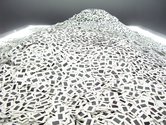

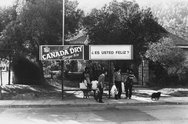
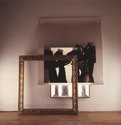
 Two Rooms presents a program of residencies and projects
Two Rooms presents a program of residencies and projects Advertising in this column
Advertising in this column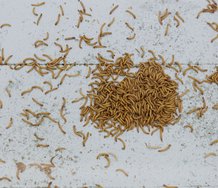
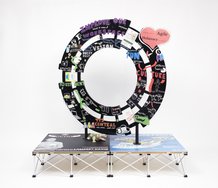
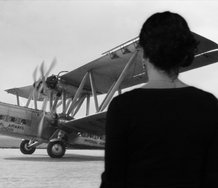
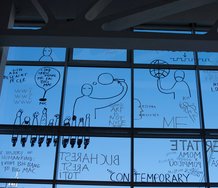
This Discussion has 0 comments.
Comment
Participate
Register to Participate.
Sign in
Sign in to an existing account.